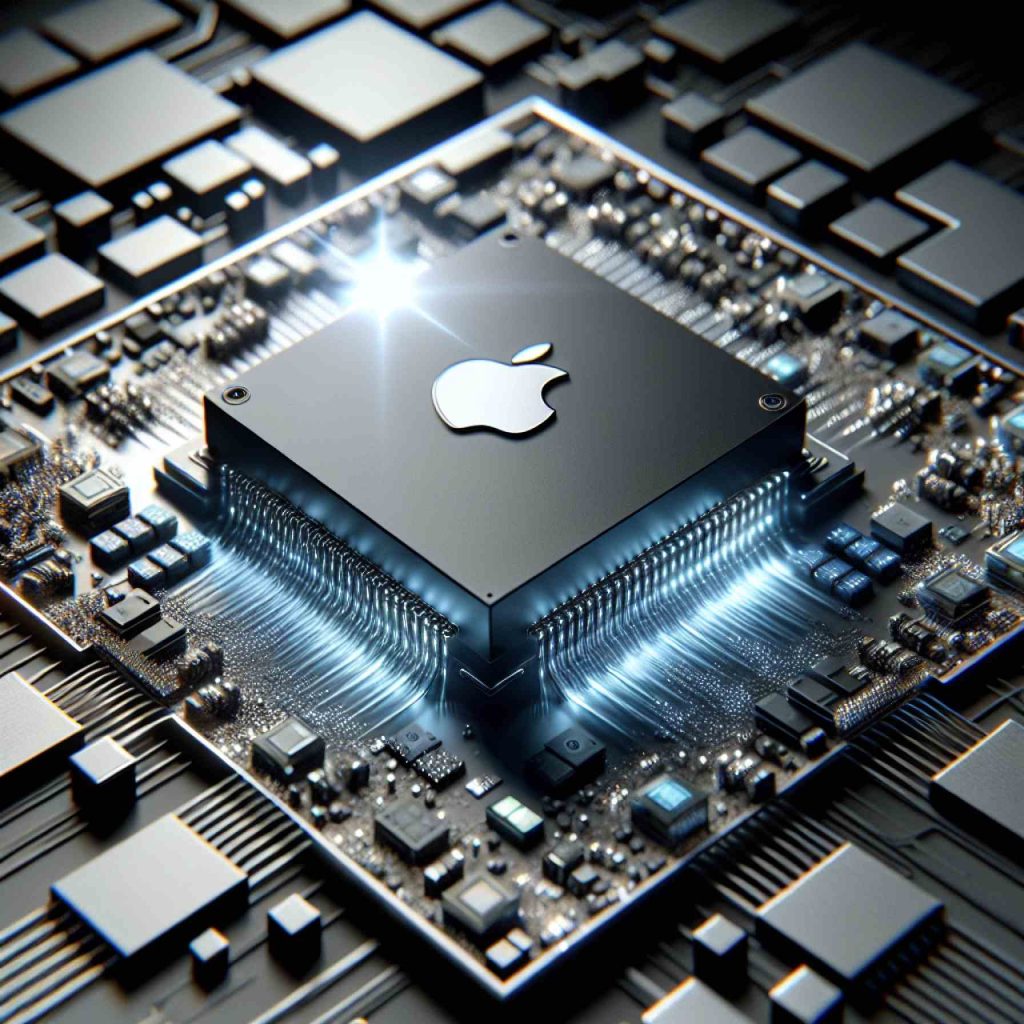
- Apple is developing new AI chips to reduce reliance on Intel and enhance its device ecosystem with proprietary technology.
- The company envisions AI-enhanced smart glasses that blend digital and real-world interactions, expected for mass production by 2027.
- These energy-efficient glasses could rival Meta’s AR efforts and are based on architectures used in Apple Watch chips.
- Apple aims to integrate a powerful AI voice assistant to facilitate navigation through augmented reality experiences.
- Intense competition exists from Meta and Google, yet Apple plans to innovate with next-gen chips like the potential M6, M7, and Sotra.
- Beyond wearables, Apple is advancing its AirPods and smartwatches with chips codenamed Glennie and Nevis.
- Proprietary AI server chips will enhance security and efficiency, reducing reliance on OpenAI.
- Apple’s initiatives emphasize its commitment to innovation, ensuring its products remain extraordinary.
Apple’s relentless pursuit of innovation propels it yet again into uncharted territories. The tech behemoth, helmed by Tim Cook, is reportedly crafting powerful new AI chips, setting the stage for a transformative leap in consumer electronics. At the heart of this technological advancement lies Apple’s quest to reduce its dependence on Intel and reshape its device ecosystem with proprietary silicon wonders.
Imagine slipping on a pair of sleek, AI-enhanced smart glasses that seamlessly blend digital overlays with the real world. These aren’t mere sci-fi dreams; Apple envisions them as near-future possibilities. Positioned to rival Meta’s Ray-Ban collaboration, these glasses promise to revolutionize visual interaction, integrating commanding AI capabilities with their streamlined design.
Expected to see mass production by 2027, these smart glasses are grounded in energy-efficient chip architectures akin to those powering the compact yet mighty Apple Watch. Tailored to efficiently manage a wide array of camera controls, these chips demonstrate Apple’s commitment to nuanced hardware that prioritizes performance and battery life.
But Cupertino’s ambitions don’t stop at eyewear. Apple’s long-gestating augmented reality ambitions extend beyond, hinting at a convergence of wearable technology that could one day be as revolutionary as the iPhone. Notably, there’s an intriguing whisper of an AI voice assistant, poised to offer seamless navigation through these new realms.
While Apple dreams big, it faces formidable competition. The race is on with Meta, which eyes 2027 for its AR lens debut, and Google’s Android AI endeavors, which currently hold a significant lead. Competing on multiple fronts, Apple aims to outpace rivals with next-generation chips possibly named the M6, M7, and an enigmatic Sotra.
The drive for innovation doesn’t solely orbit around wearables. Apple’s ambitions extend through its entire product lineup, including AirPods and future iterations of its beloved smartwatches. Chips codenamed Glennie and Nevis hint at a sensorial integration poised to redefine auditory and visual experiences by the close of this decade.
The backbone of Apple’s AI future might be its proprietary AI server chips, designed to handle complex AI queries with unparalleled security and efficiency, marking a significant pivot from its current reliance on OpenAI’s prowess.
At this inflection point in technology, Apple embarks on a path where the only constant is change. These initiatives highlight the company’s enduring commitment to pushing technological boundaries, ensuring its devices remain not just essential, but extraordinary. In embracing their silicon ingenuity, Apple isn’t just envisioning a new era of devices—they’re sculpting the future.
Apple’s Next Big Leap: How AI Chips Could Reshape Our World
Introduction
Apple’s relentless pursuit of innovation propels it into uncharted territories once more. Under the leadership of Tim Cook, Apple is crafting powerful new AI chips, setting the stage for a transformative leap in consumer electronics. This strategic shift aims to reduce its dependence on Intel and reshape its device ecosystem with proprietary silicon excellence.
Keywords and Emerging Trends
1. AI-Enhanced Smart Glasses: Apple’s ambitious plans include AI-enhanced smart glasses set to revolutionize visual interaction. Expected to rival Meta’s Ray-Ban collaboration, these glasses promise to seamlessly blend digital overlays with the real world.
2. Target Production Timeline: Mass production of these smart glasses could commence by 2027, leveraging energy-efficient chip architectures similar to the Apple Watch.
3. Augmented Reality and AI Integration: Beyond eyewear, Apple envisions a future convergence of wearable technology, potentially as revolutionary as the iPhone. An AI voice assistant may navigate these new realms, enhancing user interaction.
4. Rivalry in the AR and AI Market: While Apple advances, it faces stiff competition from Meta and Google, with Meta’s AR lens slated for a 2027 debut and Google’s existing lead in AI.
5. Extending AI Integration Across Devices: Apple’s innovation drive covers its entire product lineup, including AirPods and forthcoming smartwatches. Chips codenamed Glennie and Nevis are expected to redefine auditory and visual experiences by the end of this decade.
6. AI Server Chips: Proprietary AI server chips could become the backbone of Apple’s AI ambitions, offering the ability to handle complex AI queries with heightened security and efficiency, marking a pivotal shift from reliance on OpenAI.
Pros and Cons Overview
Pros:
– Enhanced device integration with AI capabilities.
– Reduction in dependence on external suppliers like Intel.
– Potential to revolutionize wearable technology and user interaction.
Cons:
– Intense competition from established AI and AR players.
– Significant R&D investment required.
– Uncertainties surrounding mass adoption of AR glasses.
How-To Steps for Staying Up-to-Date with Apple Innovations
1. Follow Keynote Events: Regularly watch Apple’s keynote events, where new products and technologies are unveiled.
2. Read Tech Publications: Keep informed by reading reputable tech publications such as Apple’s own newsroom, Wired, and TechCrunch.
3. Join Forums and Communities: Engage with Apple user forums and tech community discussions on platforms like Reddit and MacRumors.
4. Subscribe to Newsletters: Subscribe to newsletters from tech influencers and journalists who follow Apple’s developments.
Real-World Use Cases and Applications
– Enhancing Productivity: The integration of AI in devices can streamline tasks through voice commands and personalized assistance.
– Healthcare Applications: Smart wearables with advanced sensors could play a critical role in monitoring health metrics.
– Augmented Reality Shopping: Retail experiences could be transformed with AR glasses, allowing users to visualize products in real-time.
Conclusions and Recommendations
As Apple continues to pioneer the integration of AI and AR, tech enthusiasts and potential consumers should stay informed on these developments. Embrace opportunities to test Apple’s innovations at official stores and share feedback to influence future designs and functionalities.
Actionable Tip: Set a Google Alert for “Apple AI innovations” to receive real-time updates and insights into Apple’s evolving tech landscape.



